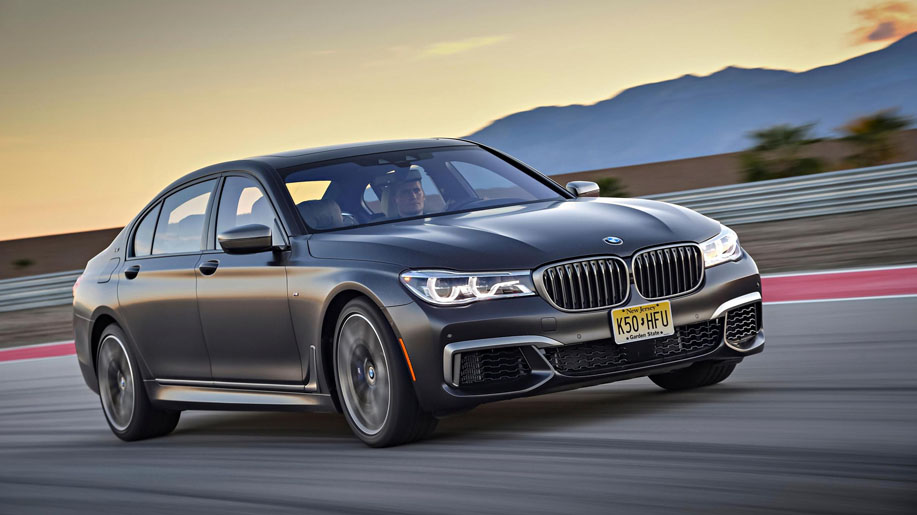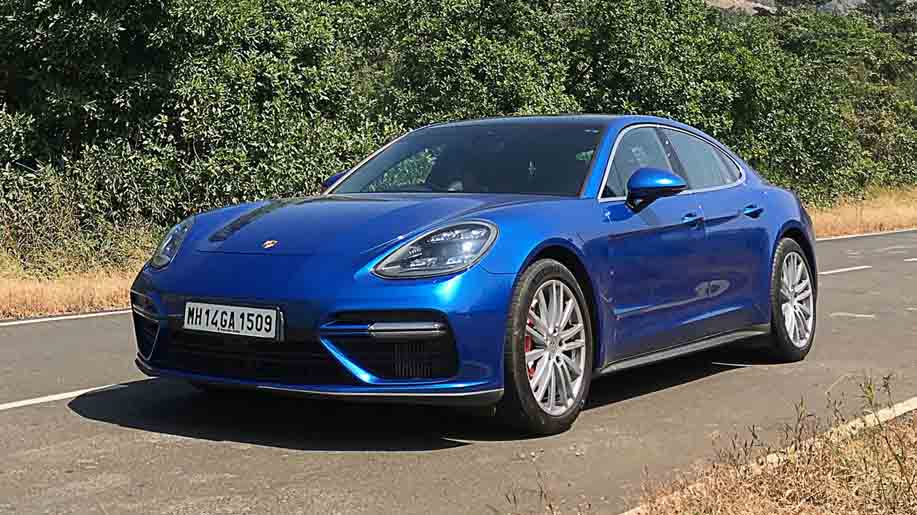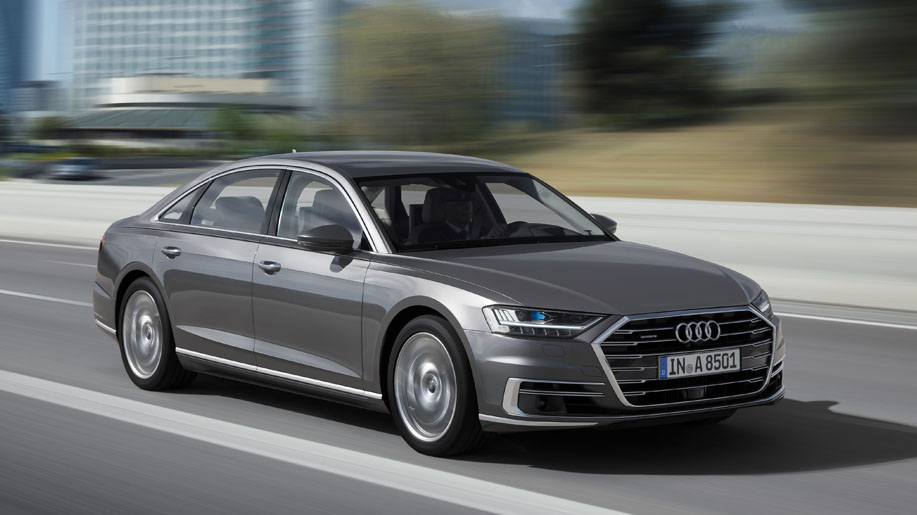
The image that comes to mind when thinking of a successful corporate executive is that of a sharply dressed, grey-haired, fairly experienced person who is chauffeured around in a luxury sedan, right? Well, you won’t be too wrong if you’re imagining a business magnate from the ‘80s or earlier. Back then it was a status symbol to be driven around for your meetings. The scenario has drastically changed in the past few decades with the advent of young CEOs. Start-ups have blown in valuation in a short span of time, understandably bringing down the average age of successful entrepreneurs by a large margin. Now, you won’t expect these young over achievers, those with a taste for fast cars, to be stuck in the back seat of their luxury cars. They would rather be behind the wheel, revving up the engine for a powerful driving experience. And catering to their needs are recently launched (or to be launched) machines that can emulate the dynamics of some of the best sports cars on the market in terms of performance, coupled with advanced technology and interiors that wrap occupants in utmost luxury. Here are six such cars that our automobile enthusiasts would itch to get their hands on.

BMW 7 Series Sedan
The sixth-generation 7 Series, when it entered into production in the second half of 2015, surpassed everyone’s expectations by vastly improving upon its predecessor. Filled with the latest tech and creature comfort, BMW really left no stone unturned in the endeavour to outdo its rivals.
Look and feel
The first step was to lose weight and a good amount of it. For this, BMW had to completely re-engineer its flagship luxury saloon and incorporate more of carbon-fibre-reinforced plastic, high-strength steel and aluminium to be around 130kg lighter than the previous generation model. As far as the design goes, the Bavarian automaker swapped the dated styling of the car’s predecessor for a more modern look. This is dominated by the revised bumper, sharper looking LED headlights (laser headlights optional), sculpted shoulder line and sleeker LED tail lights that are connected by a chrome strip. Inside the new 7 Series, just about everything is new in the cabin, which is lavishly appointed with wood and Alcantara leather. The driver can enjoy a massage too when on the road with eight options for muscle relaxation. The new 7 Series also features new iDrive control functions. For example, in three stages, a fragrance can be selected with the iDrive controller, or by pressing a button in the air-conditioning control panel, to accompany you through the drive. Others include easy touch and gesture controls (detection by a 3D sensor) and a remote parking system that uses a combination of cameras and sensors to allow forward and reverse parking manoeuvres remotely through the key fob.
Drive
BMW has made the 7 Series more driver-focused than ever. While the German automaker offers many engine options, the range-topping M760Li xDrive is what any motoring enthusiast would appreciate. The massive 6.6-litre V12 engine churns out 610hp and produces a peak torque of 590Nm, which is enough to propel the full-size luxury sedan from zero to 100 kmph in a jaw-dropping 3.7 seconds. Just to put that into context, it’s a full-size luxury car that’s only 0.3 second slower than the Jaguar F-Type R Coupe sports car and takes only one-tenth of a second more than the Porsche 911 Carrera GTS to do the 0-100 kmph sprint; that’s seriously quick. BMW also claims that the M-badged 7 Series has a top speed of 330 kmph – move away supercars, we have a stunning luxury sleeper car on our hands! That’s not all. Thanks to the all-wheel-drive system clubbed with the fantastic four-wheel-steering on the BMW M760Li, it’s not just fast on the straights but also quite nimble and fun to drive around the corners. bmw.in

Maserati GranTurismo
Designed by the famous Italian car design firm Pininfarina, there is little doubt that the Maserati GT is one of the most beautiful two-door sports coupes on sale currently.
Look and feel
Despite the fact that the four-seat GT car has been on sale since 2007, the design hasn’t aged at all. It looks powerful yet pretty with a curvy body and bulging wings, intakes, and skirts. Over the last ten years, the Italian automaker has made small updates to the GT, which may go unnoticed to the untrained eye. This year, the Maserati GranTurismo received new bumpers at both ends that help lower the drag coefficient, updated headlights that now come with daytime running lights, and an 8.4-inch touchscreen infotainment system. The interior isn’t as cramped as other sports coupes and offers plenty of space to its occupants, much like its only rival – the Mercedes-Benz S-Class coupe. From the instrument panel to the rear seats, the Maserati GranTurismo cabin is wrapped in top quality Poltrona Frau and Alcantara leather with excellent stitching, which makes the interior look chic. The front seats have carbon fibre backs for added comfort. The Maserati Stability Program (MSP) makes use of a number of sensors that continually check the driving status so it can activate safety and performance systems accordingly, for controlled handling and a steady grip. Thanks to its impressive suspension system, the GT is a smooth drive, even over long distance travels.
Drive
The only engine available on the Maserati GT is a naturally aspirated 4.7-litre V8 engine sourced from Ferrari. The power train is every bit as exciting as you would expect from a unit with Ferrari badging. With the sports mode engaged, it roars like a hungry beast when revved and makes all sorts of pops and bangs when the foot is taken off the throttle. Put it on normal mode and the GT transforms into a refined and reserved four-seat coupe. The V8 engine in the Maserati GT Sport trim is tuned to produce 453 bhp. The power is sent to the rear wheels through a ZF 6-speed automatic transmission, which is also the sole gearbox on offer. It can go from zero to 100 kmph in 4.7 seconds and hit a top speed of 302 kmph. If you want a slightly more practical Ferrari with an affordable price tag, Maserati GT is the car for you. maserati.com

Porsche Panamera Turbo
The original Panamera that was launched in 2009 wasn’t the prettiest looking car and received a lot of slagging from fans and critics alike. However, it was still one of the best driver-focused machines on the market at the time; and so, shortly after its launch, it quickly earned itself the label of being a four-seat version of Porsche’s incredible 911 sports car – it’s that good!
Look and feel
Last year, with the launch of the second-generation Panamera, Porsche basked in praises for creating a sports saloon that is beautiful on the inside and outside, both. The design tweaks include a lower roofline, taller rear end, shapelier rear-haunches and aesthetically pretty head and tail light clusters. Even though Porsche has lowered the roof of the new Panamera by almost an inch, the rear headroom has remained unchanged. Additionally, the 2017 Porsche Panamera Turbo is the German carmaker’s first car to feature its new cylinder deactivation control, which allows four of the eight cylinders to be shut down during low fuel consumption scenarios. Porsche claims that this technology has helped the Panamera to be as much as 30 per cent more fuel efficient than the previous model. Inside, its “ascending centre” console is positioned such that you needn’t reach far from the steering wheel to change gear. And on the cockpit, the buttons are clustered logically for easy navigation.
Drive
Weighing in at two tonnes and measuring five metres in length, the Panamera doesn’t have the dimensions of a tiny sports car. But, Porsche sure knows how to set-up its cars to give it incredible handling. The Panamera has the rear-wheel steering as an optional extra, which helps the large sports sedan stay stable at high speeds while making it incredibly nimble at corners. When it comes to driving comfort, the Panamera Turbo is fitted with adaptive air springs, which help the sporty saloon tackle the bumpy roads of India with ease. Porsche has further tweaked the suspension set-up on the updated model, which lets the driver choose from three ride heights – low, medium and high. Under the bonnet of the Porsche Panamera Turbo is a 4.0-litre twin-turbo V8 that produces 550hp. It is enough to propel the car to 100 kmph from standstill in just 3.5 seconds. The optional Sport Chrono package equips the car with launch control, a system that makes the car accelerate smoothly, as fast as possible. There is also a beautiful steering-mounted rotary switch that gives direct access to the four driving modes – normal, sport, sport plus and individual. The Porsche Panamera has always been a fantastic luxury sedan that has offered stunning performance, but now it has Porsche-worthy design and styling to go along with it. porsche.com

NEWBIES
Audi A8
Recently, Audi revealed the fourth generation model of its flagship A8 luxury sedan and the German automaker claims that it is the most technologically advanced car in its class. A segment that includes the likes of Mercedes-Benz S-Class, BMW 7 Series and the Jaguar XJ with its most advanced autopilot system, it’s a tall claim to make. Having said that, Audi has introduced several segment-first technologies on the A8 to back that up, including Level 3 conditional automation (levels of autonomy start with Level 0 offering no automation to full-automation at Level 5). This makes it the first production car in the world to feature the technology that will allow completely hands-free driving in specific conditions, including slow moving traffic situations. It beats even Tesla’s incredible autopilot system that falls under Level 2 with partial automation options.
The new generation A8 is an all-new car built from the ground up. It has grown by 1.5 inches in length. To make the full-size luxury saloon lighter, Audi has for the first time used hybrid construction for the body shell comprising of four different materials – aluminium, magnesium, high-strength steel and carbon fibre. The new design looks more muscular than before and the entire styling is dominated by sharper lines. On the front is Audi’s trapezoidal grille, which is larger, stretching both tall and wide. The tail light cluster is now a full-length strip of dynamic lighting that runs side to side and lights up when the car is locked or unlocked. Inside the car, the traditional instrument cluster, which is the cockpit and navigation screen, has been swapped for Audi’s Virtual Cockpit that uses a full-colour display to present a host of information about the drive and the vehicle. Most of the physical buttons and switches have also been replaced with digital ones, accessible on the central 10.1-inch touch display and the 8.6-inch unit below it. Other notable comforts include multi-setting heated massage seats, footrests and a four-zone automatic air-conditioning system. Audi might be the last of the German luxury trio to update its flagship sedan but it has more than made up for the delay with this extremely impressive offering. If rumours hold true, the car is expected to launch in the third quarter of 2018. audi.in

Aston Martin Vantage
The new Aston Martin Vantage was unveiled late last year. The entry-level Aston has been completely revamped to replace the much loved previous-generation V8 Vantage, which had been in production since 2005. The new Vantage shares styling cues with the DB10 featured in the Bond film Spectre, and the Vulcan hyper car (luxury, high-performance vehicle) restricted to the racing track. The crisper nose, broader hips and more sculpted body lines give the Vantage an aggressive appearance and a menacing silhouette. Its most dominant design features include new small headlights, traditional Aston “Hill Climb” grille, thin LED light units connected by a central light bar on the rear and a complex diffuser unit. And just like the DB11, Aston engineers were able to sculpt the body to give it necessary downforce and aerodynamic stability without the use of active aerodynamic aids and massive wings. But it’s the interior of the car that has undergone a more substantial upgrade over the previous model. The dated dashboard, centre console, and electronic devices have been swapped for Mercedes-Benz electronic architecture that has significantly improved the user interface level and equipment handling ease. The Vantage is powered by a twin-turbocharged 4.0-litre V8 engine built by AMG, which makes 503hp and a peak torque of 505 lb-ft. Aston says that the Vantage can do 0-60 mph in 3.5 seconds and hit a top speed of 195 mph. It is expected to launch in the latter half of 2018. global.astonmartin.com

New Mercedes-Benz S-Class
Last year, Mercedes decided to update its current generation S-Class with several high-tech features and minor styling changes. The S-Class has often been the first to introduce technology and in-car gadgets that go on to become mainstream elsewhere; and the new S-Class is no different. It comes loaded with a long list of new technologies and a comprehensive suite of sensors and radar hardware to give it Level 2 autonomous driving capability. The systems work together to equip the car with an amazing 360-degree understanding of its surroundings and improved self-driving capability with minimal driver intervention. Additionally, there is a new adaptive cruise control feature that uses satellite map data and slows the car for impending curves, turns, or roundabouts. The remote parking feature lets the car park itself without the driver being in it and is able to manoeuvre out of a tight parking space on its own.
In terms of the visual updates, the minor facelift is restricted to slightly enhanced LED headlights and redesigned exhaust tips. On the inside, the S-Class’ dual digital dashboard displays have been replaced for the same 12.3-inch units used in the latest E-Class that sit under a single pane of glass. Mercedes has also decluttered the dashboard by getting rid of the cruise-control stalk located behind the steering wheel. It has been replaced with easily accessible buttons on the all-new steering wheel, which also features user-friendly touch-sensitive control pads similar to those found on the new E-Class. The car launched last month. mercedes-benz.com
Dhiram Shah












